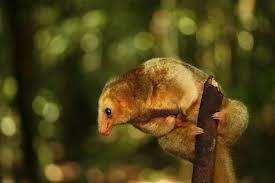{[[' ']]}
']]}
 ']]}
']]}Among the living anteaters that are existent today, the Silky Anteater is the smallest one there is of its kind. Also known as pygmy anteater (Cyclopes didactylus), the Silky anteater is a species of anteater found in South America as well as in Central America.
The Silky Anteater is different from the species where it belongs because it has rather a proportionately shorter face and larger cranium compared to the others. Most adult anteaters are quite long having a length measurement that ranges from 360-450 millimeters, approximately 14 to 18 inches long.
They have thick and quite dense, soft brown fur but sometimes they also have grey to yellowish color with a silvery gleam on it. Although many subspecies have generally darker fur, often with some appearance of brownish streaks and much lighter somewhere on the limbs and under parts, what is interesting to note is that their eyes are generally black and the soles of the feet are red.
The scientific name Cyclopes Didactylus actually means “two-toed circle-foot” which basically means the presence of two claws on the forefeet. Another innate feature a Silky Anteater has is, they have the ability to encircle a branch, twig or tree to which it is carefully clinging. The fourth toe, on the other hand is quite small and does not have claws while the other two toes are absent or cannot be visibly seen. The hind feet have four toes with exactly the same length, each toe having long claws and an invisible hallux.
Most Silky Anteaters are found in Mexico, Central America, Ecuador, Brazil, Peru and Bolivia. Some are also seen in the parts of eastern Brazil and the island of Trinidad. According to Wikipedia, there are seven recognized subspecies:
• Cyclopes didactylusdidactylus, Linnaeus, 1758 - the Guyanas, eastern Venezuela, Trinidad, Atlantic Forest
• Cyclopes didactyluscatellus, Thomas, 1928 - northern Bolivia, southeastern Peru, western Brazil
• Cyclopes didactylusdorsalis, Gray, 1865 - extreme southern Mexico, Central America, northern Colombia
• Cyclopes didactyluseva, Thomas, 1902 - western Ecuador, southwestern Colombia
• Cyclopes didactylusida, Thomas, 1900 - western Brazil, eastern Ecuador and Peru
• Cyclopes didactylusmelini, Lönnberg, 1928 - northern Brazil, eastern Colombia
• Cyclopes didactylusmexicanus, Hollister, 1914 - southern Mexico
Silky Anteater Video

















Post a Comment